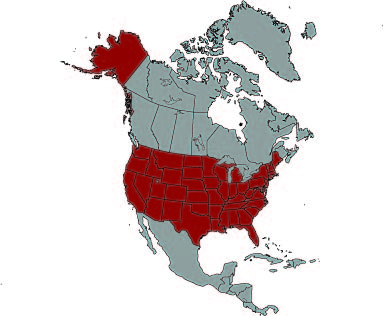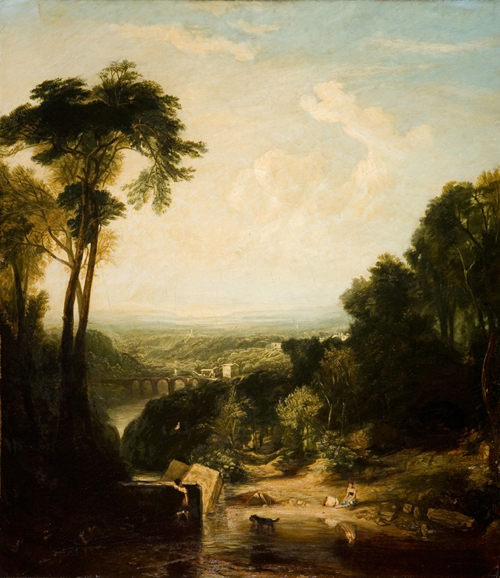

Romanticism (c. 1800 CE - 1850 CE)
In general, Romantic art focused on contemporary events rather than ancient ones. Industrialization changed the city environment and gave some men a new sense of control. Romanticists, however, sought to remind their audiences of nature's enduring and unpredictable power. They often replaced human subjects with nature as the focus of their art, constructing beautiful, powerful, and occasionally alarming scenes from their own countryside.
A new emphasis on landscape paintings, such as Crossing the Brook, accompanied Romanticism. For the first time, nature was the subject of painting instead of the setting. For example, while viewing this painting, your eyes might travel past the girl and dog to the trees and valley beyond. These figures, which are not centered in the composition, are small in comparison to the vegetation. The title might indicate what the figures are trying to do, but the painting itself focuses on the brook and its surroundings.
You may also notice visible brushstrokes. To turn away from the glossy finishes of Neoclassicism, many Romantic artists began to use these brushstrokes to capture the mood of the scene.
1872/1895
John Ottis Adams after Turner, American (1851-1927)
31 1/2 inches H; 27 3/16 inches W
Frank C. Ball Collection, gift of the Ball Brothers Foundation
1995.035.026
1789 The French Revolution breaks out in Paris.
1738 Lost city of Pompeii is uncovered.
1879 Edison invents the light bulb.
1900s Age of Enlightenment in Europe.




